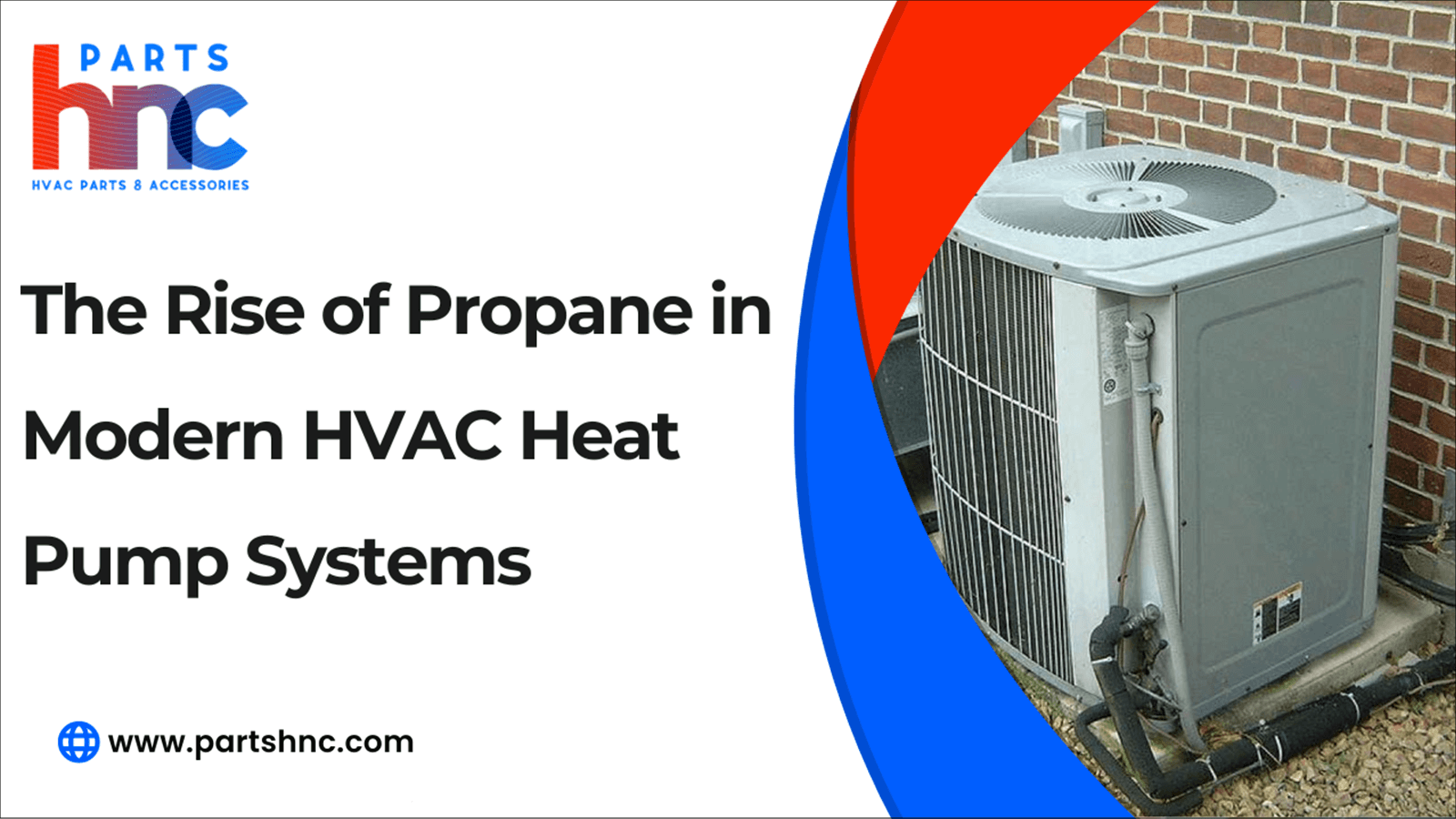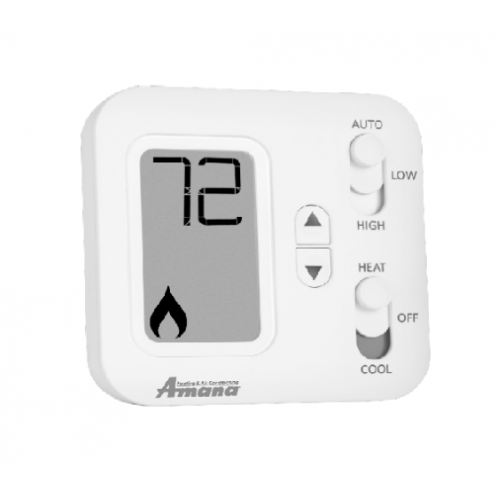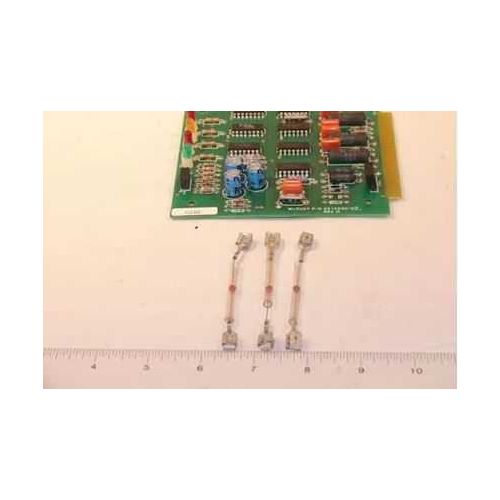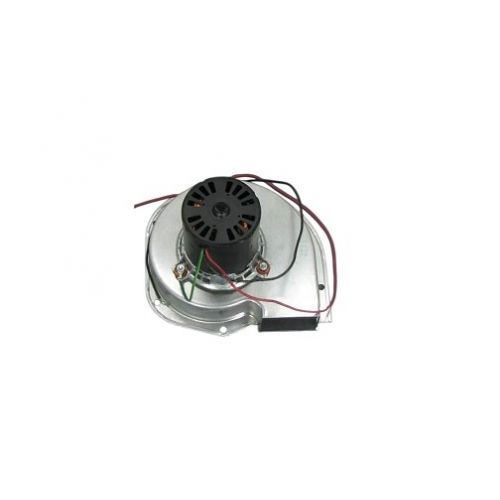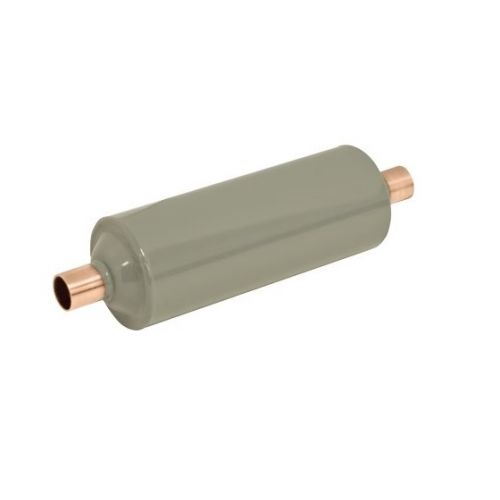The Rise of Propane in Modern HVAC Heat Pump Systems
As the HVAC industry continues to prioritize energy efficiency and environmental sustainability, propane has emerged as a powerful alternative to traditional refrigerants in modern heat pump systems. Once primarily associated with outdoor grills and rural heating, propane is now gaining traction as a low-global-warming-potential (GWP) solution in residential and commercial HVAC applications. Its thermodynamic properties make it highly effective for heat transfer, while its low environmental impact aligns with global regulations phasing out high-GWP refrigerants. Propane-based heat pumps not only reduce carbon emissions but also offer reliable performance in both heating and cooling, even in extreme temperatures. This shift marks a significant evolution in HVAC technology, meeting the growing demand for eco-friendly and cost-effective climate control solutions.
Why Propane is the Future of HVAC Refrigerants
Propane (R290) is rapidly emerging as the definitive future of HVAC refrigerants, driven by a compelling combination of environmental necessity, evolving regulations, and superior system performance. As the HVAC industry faces increasing pressure to reduce carbon footprints and comply with stringent regulatory frameworks, propane offers a unique blend of benefits that position it as the most promising refrigerant option for new and retrofit applications.
Environmental Imperative:
-
Ultra-low Global Warming Potential (GWP) of just 3, compared to over 2,000 for traditional refrigerants like R410A.
-
The ozone layer is protected by zero Ozone Depletion Potential (ODP).
-
Directly backs international climate accords, including the Kigali Amendment and the Paris Agreement.
Regulatory Alignment & Future-Proofing:
-
Compliance with international and national regulations for phasing out high-GWP refrigerants.
-
Future-proof solution, avoiding retrofit costs and penalties.
-
Aligns with regional regulations like the EU F-Gas Regulation.
High Temperature Capability:
-
Generates high flow water temperatures of 65-75°C efficiently.
-
Ideal for retrofitting older buildings with traditional radiator heating systems.
-
Expands application range beyond modern heating methods.
Long-Term Economic Viability:
-
Initial installation may require specialized safety training.
-
Stable refrigerant pricing avoids phase-down-driven price hikes.
-
High energy efficiency leads to significant operational cost savings over time.
Continuous Innovation and Safety Advancements:
-
Modern designs minimize refrigerant charge sizes, reducing risk.
-
Leak detection sensors and advanced control systems enhance safety.
-
Strict certifications and training ensure safe handling and installation.
Check out this article on new refrigerants in HVAC systems for a sustainable new year to learn how propane is becoming a leading choice in sustainable HVAC technology.
Environmental Benefits of Propane as a Refrigerant
Propane (R290) stands out as an exceptionally environmentally friendly refrigerant, offering several critical advantages over traditional synthetic alternatives. Its use supports global efforts to reduce climate impact while maintaining high system efficiency.
Ultra-low Global Warming Potential (GWP)
Propane (R290) boasts an exceptionally low Global Warming Potential, making it a standout choice among refrigerants. This characteristic helps significantly reduce the environmental impact of HVAC systems.
-
Has a GWP of just 3, which is dramatically lower than traditional refrigerants like R410a that exceed 2,000.
-
This ultra-low GWP significantly minimizes the contribution to global warming and climate change.
Zero Ozone Depletion Potential (ODP)
Unlike many older refrigerants, propane does not harm the ozone layer, playing a vital role in environmental protection. Its zero ODP supports international efforts to restore and protect this crucial atmospheric shield.
-
Propane does not harm the ozone layer, unlike older refrigerants such as CFCs and HCFCs.
-
Its zero ODP characteristic helps support the ongoing global recovery of the ozone layer.
Naturally Occurring Substance
Propane is a naturally occurring hydrocarbon derived from fossil fuel processing, making it an environmentally preferable refrigerant. Its integration into the natural carbon cycle avoids introducing harmful synthetic chemicals into ecosystems.
-
Derived from natural gas and petroleum refining processes.
-
Being a natural hydrocarbon, propane fits within the earth’s carbon cycle, avoiding the release of persistent synthetic chemicals into the environment.
Reduced Energy Consumption
The thermodynamic efficiency of propane enables HVAC systems to operate more effectively, reducing electricity use. This not only cuts energy costs but also lowers carbon emissions from power generation.
-
Propane’s excellent thermodynamic properties enable HVAC systems to run more efficiently.
-
This efficiency lowers electricity demand, which in turn reduces carbon emissions associated with power generation.
By selecting propane, the HVAC industry actively contributes to sustainability and environmental protection.
Read this article on how Eco-cooling: low GWP units & energy saving to understand the benefits of using refrigerants like propane (R290) in modern HVAC systems.
Why Propane is Gaining Popularity in HVAC Systems
The adoption of propane (R290) in HVAC systems is rapidly gaining momentum worldwide. This rise is driven by its unique combination of environmental benefits, strong regulatory compliance, and notable performance advantages, making it an attractive choice for manufacturers, installers, and end-users alike.
Environmental Benefits: Propane (R290) offers significant advantages in reducing environmental impact compared to traditional refrigerants. Its minimal effect on global warming and ozone layer preservation makes it an ideal choice for sustainable HVAC systems.
-
Ultra-low Global Warming Potential (GWP) of just 3
-
Zero Ozone Depletion Potential (ODP)
-
Meets stringent global and national regulations
-
Helps avoid future refrigerant bans and extra costs
Operational Efficiency: Propane systems deliver exceptional energy performance, leading to lower electricity consumption and reduced operational costs. This efficiency benefits both users and the environment by conserving energy resources.
-
Higher Coefficient of Performance (COP)
-
Improved Seasonal COP (SCOP)
-
Reduces overall energy consumption
-
Lowers operational and electricity costs
Heating Capacity: The ability to generate high water temperatures makes propane heat pumps highly adaptable for various heating needs. This flexibility supports retrofitting older systems and serves a wide range of residential and commercial applications.
-
Generates water temperatures up to 75°C
-
Suitable for various heating applications
-
Ideal for retrofitting older radiator systems
-
Versatile for both residential and commercial use
Cost Savings: While initial installation costs may be slightly higher, propane HVAC systems offer significant long-term financial benefits. Reduced energy bills and stable refrigerant prices contribute to overall cost-effectiveness.
-
Slightly higher initial installation costs
-
Offset by long-term energy savings
-
Stable and lower refrigerant prices
-
Reduces maintenance and operational expenses
Safety Considerations in Propane-Based HVAC Systems
While propane's environmental benefits are undeniable, its flammability (classified as A3, highly flammable) necessitates rigorous safety considerations in HVAC system design, installation, and maintenance. However, significant advancements and strict adherence to international and national standards have made propane-based systems very safe.
-
Low Charge Systems: Modern R290 heat pumps are designed to operate with minimal refrigerant charge, significantly reducing the amount of flammable gas present in the system. This mitigates potential risks in the unlikely event of a leak.
-
Outdoor Installation: Most residential and light commercial R290 heat pumps are primarily installed outdoors. This ensures that any potential leakage dissipates quickly and harmlessly into the atmosphere, away from enclosed spaces and ignition sources.
-
Enhanced Safety Features: Systems incorporate advanced safety features such as leak detection sensors that can activate ventilation or shut down the system automatically upon detecting a leak. Components are often spark-proof or sealed to prevent ignition.
-
Rigorous Certification and Training: Installation and servicing of propane HVAC systems must be performed by highly trained and certified technicians who understand the specific handling protocols for flammable refrigerants. This includes adherence to standards like EN 378 and, in India, relevant BIS (Bureau of Indian Standards) codes for LPG handling and domestic installations (e.g., IS 12011).
-
Ventilation and Location Requirements: Strict guidelines dictate the ventilation requirements for areas where propane HVAC units are installed, as well as minimum distances from windows, doors, and potential ignition sources.
-
Odorant for Detection: Propane is naturally odorless, but a distinct "rotten egg" smell (mercaptan) is added to it, enabling easy detection of leaks by smell, even at low concentrations.
-
Regular Maintenance and Inspections: Routine professional maintenance is crucial to ensure the integrity of the system, identify any potential wear or damage, and verify the proper functioning of all safety components. This includes checking for leaks and ensuring adequate ventilation.
By following these stringent safety measures and utilizing certified professionals, propane-based HVAC systems can be a safe and environmentally responsible choice for heating and cooling.
Comparing Propane with Traditional HVAC Refrigerants
The choice of refrigerant is pivotal to an HVAC system's performance and environmental impact, and this comparison highlights why propane is increasingly favored over traditional options like R410a and R32.
|
Feature |
Propane (R290) |
R410a (Traditional HFC) |
R32 (Transitional HFC) |
|
Global Warming Potential (GWP) |
3 (Ultra-low) |
> 2,000 (Very High) |
675 (High) |
|
Ozone Depletion Potential (ODP) |
0 (Zero) |
0 (Zero) |
0 (Zero) |
|
Flammability Classification |
A3 (Highly Flammable) |
A1 (Non-flammable) |
A2L (Mildly Flammable) |
|
Energy Efficiency (COP/SCOP) |
Often higher, excellent thermodynamic properties |
Good, but typically lower than R290 in heat pumps |
Good, but generally not as efficient as R290 in heat pumps |
|
Operating Temperature Capability |
Excellent for high flow temperatures (65-75°C), good in cold climates |
Good, but efficiency drops at lower ambient temperatures and for high flow temperatures |
Good, but efficiency can drop at very low ambient temperatures and for high flow temperatures |
|
Environmental Regulations |
Future-proofed against phase-downs, natural refrigerant |
Facing global phase-downs and restrictions |
May face future restrictions due to GWP |
|
Installation Complexity |
Requires specialized training, and outdoor installation is often preferred |
Standard installation practices |
Requires some specialized handling, but less than R290 |
|
Long-Term Cost-Effectiveness |
High efficiency and lower refrigerant cost lead to long-term savings |
Higher operating costs due to lower efficiency and potential future refrigerant cost increases |
Better than R410a, but R290 often offers more long-term savings |
|
Environmental Impact (Overall) |
Minimal impact, highly sustainable |
Significant impact on climate change |
Moderate impact on climate change |
Propane's rise in modern HVAC heat pump systems marks a significant leap towards a sustainable future. With its ultra-low GWP and zero ODP, R290 offers an environmentally superior and future-proof alternative. This is coupled with exceptional energy efficiency and robust performance in varied conditions. While safety remains paramount, continuous innovation mitigates risks, ensuring reliable integration. Ultimately, propane isn't just a trend; it's a leading force in decarbonizing heating and cooling, promising both ecological and economic benefits for generations to come.
Looking to upgrade your HVAC system with eco-friendly and efficient components? PartsHnC offers top-quality parts like compressors, expansion valves, and heat exchangers from trusted brands such as York, Carrier, and Lennox. Explore our selection to power your propane (R290) HVAC heat pumps with the best in reliability and performance!
FAQs
Is it cheaper to heat with a heat pump or propane?
Heat pumps are generally cheaper to operate (20-40% lower costs) in moderate climates, while propane may be more cost-effective in extreme cold, where heat pumps lose efficiency. Actual savings depend on local energy prices and climate conditions.
Are propane heat pumps safe?
Yes, modern propane heat pumps are safe when properly installed with leak detectors and charge limits (≤150g). They meet strict international safety standards (IEC 60335-2-40) for flammable refrigerants.
What is the most efficient way to heat a house with propane?
A high-efficiency propane furnace (95 %+ AFUE) or propane heat pump offers the best efficiency. Pairing with a programmable thermostat and proper insulation maximizes savings.


